Garlic is a wonderfully versatile food staple that adds flavor to a variety of recipes. Planting garlic in Zone 6 can be both challenging and rewarding, but knowing when the optimal time for planting this root vegetable in your area will help ensure good growth. Understanding the proper timing factors into achieving maximum yields and tastiest crops, so read on to find out the best time to plant garlic in Zone 6! By exploring seasonal climates and other important considerations like soil temperatures, you’ll be better equipped with the knowledge you need to get the most out of your gardening experience.
What Are Growing Zones?
When it comes to plants, certain growing zones have their own special characteristics. These zones are usually determined by the climate of the area and can make a big difference in how successfully a plant will grow. [1]
The United States Department of Agriculture (USDA) has developed an interactive Plant Hardiness Zone Map that shows the average annual extreme minimum temperature for each zone. This map can help gardeners understand what type of plants may be most suitable for their particular zone.
Knowing the hardiness zone of your area can be very helpful when selecting plants that are likely to thrive. Annuals, perennials, shrubs, trees and other woody plants all have recommended planting zones based on their cold tolerance. When choosing plants for your landscape, it is important to check the plant tag or label for its recommended growing zone.
Using plants that are well-suited to your area helps ensure that they will perform as expected and be a welcome addition to your landscape. With a little knowledge, you can create beautiful outdoor spaces with plants that are just right for your hardiness zone. Be sure to research the plants you’re considering and consider any additional requirements they may have for soil, sun and water. This will help ensure your success in gardening! [2]

What are the Special Characteristics of Each Growing Zone?
Each of the growing zones has its own characteristics, though all are within the same general temperature range.
- Zone 1: This is the coldest zone and ranges from -60 to -50 degrees Fahrenheit. Plants that can tolerate these temperatures require a long dormant period in order to survive winter. Some examples of plants that grow in this zone include Alpine forget-me-not, Arctic poppy, and creeping phlox.
- Zone 2: This zone ranges from -50 to -40 degrees Fahrenheit. It is slightly warmer than zone 1 but still has a long winter season. Many of the same plants that grow in zone 1 also thrive here, including Arctic poppies, creeping phlox, and Alpine forget-me-not. Other hardy plants that do well in this zone are wild geraniums and mountain avens.
- Zone 3: This zone ranges from -40 to -30 degrees Fahrenheit. While plants in this zone still need a period of dormancy, the shorter winter season allows for more flowering and fruiting. Plants that grow in this zone include daisies, lupins, and columbine.
- Zone 4: This growing zone ranges from -30 to 20 degrees Fahrenheit. Plants in this zone require little dormancy and can flower for a long period of time during the summer months. Examples of plants that grow in this zone are roses, delphiniums, and foxgloves.
- Zone 5: This zone ranges from -20 to -10 degrees Fahrenheit. This zone requires a significant amount of heat during the growing season and plants must be able to tolerate extreme temperatures in order to survive. Some plants that grow in this zone are hibiscus, gardenias, and bougainvillea.
- Zone 6: This growing zone ranges from -10 to 0 degrees Fahrenheit. This zone requires very hot temperatures during the summer months and plants must be able to tolerate extreme heat in order to survive. Examples of plants that grow in this zone are cactus, agave, and aloe vera.
- Zone 7: This zone ranges from 0 to 10 degrees Fahrenheit. Plants that grow in this zone need extra insulation to survive cold temperatures, but can still tolerate extreme heat if necessary. Examples of plants that do well here are irises, daylilies, and clematis.
- Zone 8: This growing zone ranges from 10 to 20 degrees Fahrenheit. Plants in this zone require protection from both heat and cold temperatures. Examples of plants that grow in this zone include dahlias, petunias, and snapdragons.
- Zone 9: This is the hottest zone and ranges from 20 to 30 degrees Fahrenheit (10 to 16C). Plants in this zone require additional heat during the summer months, while also needing to withstand freezing temperatures during winter. Examples of plants that do well here are roses, geraniums, and impatiens.
- Zone 10: This is the hottest growing zone and ranges from 30 to 40 degrees Fahrenheit. Plants in this zone require extra heat during the summer months, but must be able to tolerate extreme cold temperatures during winter. Examples of plants that do well here are bougainvillea, hibiscus, and gardenias.
- Zone 11: This is the warmest growing zone and ranges from 40 to 50 degrees Fahrenheit. Plants in this particular zone necessitate additional heat during the summer months, while also exhibiting resilience to endure frigid winter temperatures. Examples of plants that do well here are citrus trees, palm trees, and bougainvillea. [3]
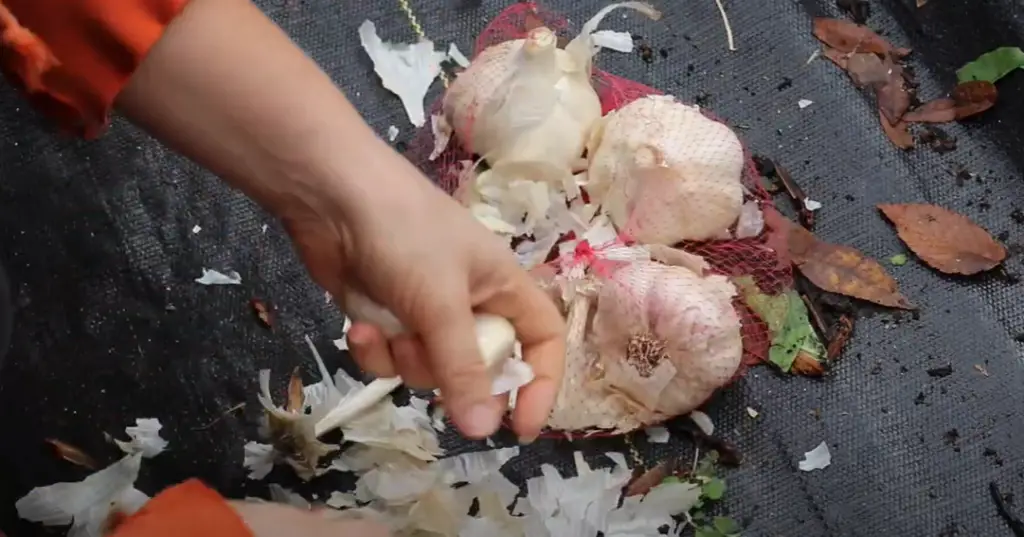
Growing Zones 6: Pros and Cons
There are a few pros and cons associated with planting in growing zone 6. The biggest pros for this region is the climate, which allows for an extended growing season than other areas. This can allow growers to get more out of their gardens since they can try planting earlier in the spring and later into the fall. Growing zone 6 also has moderate temperatures throughout the year which can help plants to thrive. [4]
Another benefit of growing zone 6 is the soil quality. This region typically has rich, well-draining soils that are easy to work with and take care of. The mild climate also helps keep weeds from becoming a problem in the garden. Additionally, there are plenty of local nurseries and greenhouses that supply high-quality plants and materials to make gardening convenient and successful.
On the other hand, there are a few drawbacks to consider in this region as well. The biggest challenge is dealing with the potential for cooler temperatures in late spring and early summer that can damage tender young plants. Additionally, summers tend to be humid and wet which can lead to fungal problems if not managed properly. Finally, pests such as aphids and spider mites can be a problem, especially if not addressed quickly. [5]
Which Vegetables are Suitable for Growing in Zone 6?
Zone 6 generally covers the middle portion of the United States. It is considered a moderate climate with cold temperatures during the winter and hot, humid summers. This means that some vegetables are better suited to this area than others.
The following vegetable varieties are recommended for growing in Zone 6:
- Tomatoes
- Peppers
- Cucumbers
- Squash
- Beans
- Carrots
- Lettuce
- Peas
- Spinach
- Eggplant
These vegetables are well adapted to the climate and soil conditions of Zone 6. They require regular watering, but they should not be over-watered as this can lead to root rot and other problems. Most of these vegetables can be planted directly in the ground or started indoors and then transplanted when the temperature is suitable. [6]
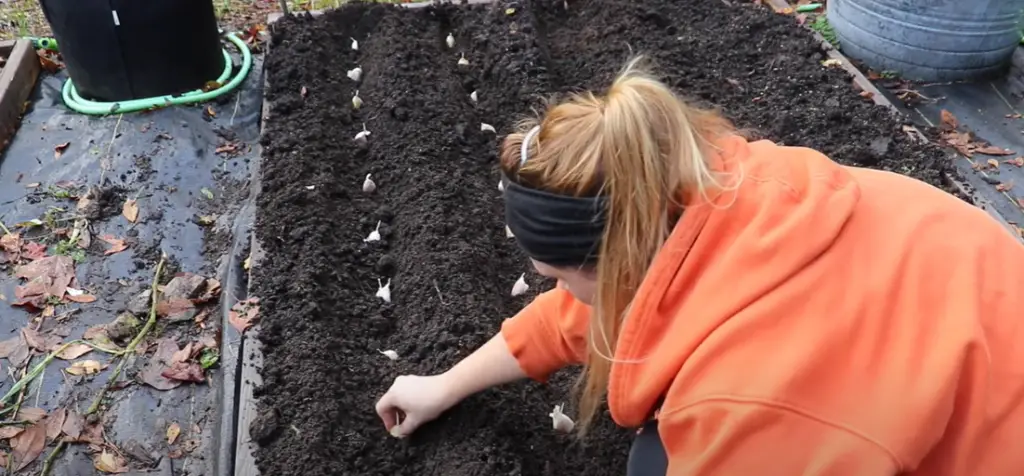
What Types of Garlic Are Available?
Garlic comes in numerous varieties. The two most commonly consumed types are softneck (Allium sativum) and hardneck (Allium ophioscorodon).
Softneck Garlic
Softneck garlic is the most widely cultivated and consumed type of garlic. It has a milder flavor than hardneck varieties, with cloves ranging in size from small to medium. Softneck garlic does not form a flowering stalk (scape), but instead forms multiple layers of thin-skinned cloves around a central stalk. This makes it ideal for braiding and storing for extended periods of time.
Hardneck Garlic
Hardneck garlic has a stronger flavor and larger cloves than softneck varieties. It is generally grown in colder climates, as it needs a period of cold weather to form its flowering stalk (scape). The stalks are often braided for storage and display purposes. Hardneck garlic also tends to have fewer cloves per head than softneck varieties.
Elephant Garlic
Elephant garlic (Allium ampeloprasum) is actually a type of leek, and not a true garlic. It has an extremely mild flavor and large cloves which can be up to four times the size of standard garlic cloves. It is best eaten raw or lightly cooked as it can become bitter if over-cooked.
Garlic Chives
Garlic chives (Allium tuberosum) are a type of herb related to garlic, but with a milder flavor. The flat leaves can be used as an alternative to standard chives, or the small white flowers can be used as a decorative garnish. Garlic chives are often used in Asian dishes, and can also be dried for long-term storage.
Wild Garlic
Wild garlic (Allium ursinum) is a type of wild onion found growing in woodlands across Europe. It has a milder flavor than standard garlic, and its small round bulbs can be eaten raw or cooked. Wild garlic leaves are also edible and can be used as a salad green. It is best gathered in the spring when it is still young and tender. The white flowers that appear in late spring or early summer are also edible and have a mild garlic flavor. [7]
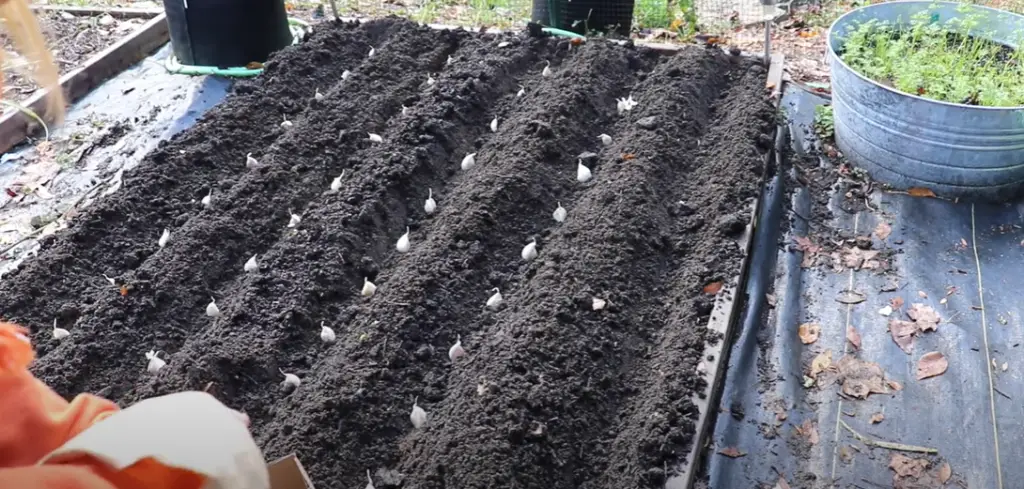
When to Plant Garlic in US Hardiness Zone 6?
Garlic is a popular crop in many parts of the world. In US Hardiness Zone 6, garlic should be planted in mid-September to late October for a successful harvest. Planting before mid-September will result in smaller bulbs due to cooler temperatures and shorter days. After October, the cold weather can cause the garlic plants to go dormant and not form edible bulbs.
If possible, it is best to sow garlic cloves into the soil in late summer or early fall, around 4-6 weeks before the first frost date in Zone 6. Planting too soon can cause the garlic cloves to rot and will not give them enough time to develop a healthy root system prior to winter weather. Plant each clove 2 inches deep and 4-6 inches apart in a well-drained, fertile soil.
To ensure a healthy harvest in the spring, garlic needs at least 6-8 weeks of cold weather during the winter season. Once temperatures begin to rise and days become longer, the garlic plants will start to come out of dormancy and can be harvested. [8]
How to Grow Garlic in Zone 6?
Garlic is a vegetable that thrives in colder climates and can be successfully grown in Zone 6. Here are some tips to help you get the best out of your garlic crop:
Preparing the soil
Before planting, make sure your soil is well-draining and has plenty of organic matter. You can add manure or compost to help improve the soil’s ability to retain water and nutrients. Additionally, make sure that you check the pH level of your soil before planting, as garlic grows best in a slightly acidic environment with a pH between 6 and 7.
Planting garlic
Garlic can be planted in the early spring or fall. When planting, make sure to leave about 5 inches of space between cloves so they have enough room to grow. Plant your garlic cloves pointy-side up and cover them with soil. For best results, water your garlic once a week during the growing season to ensure the soil remains moist.
Harvesting garlic
When harvesting, it’s important to wait until the tops of your garlic plants start to brown and die back before you pull them out of the ground. Once harvested, clean off any excess dirt and store in a cool, dry place. You can also hang your garlic for decoration or braiding if you prefer.

Garlic pests and diseases
Garlic is prone to a few pests, including aphids and cabbage loopers, as well as some fungal diseases like white rot and rust. To prevent damage from these pests and diseases, use companion planting with other vegetables like onions and tomatoes, or spray your garlic plants with an insecticide or fungicide. Additionally, make sure to rotate your garlic crop every year so that soil-borne diseases don’t build up in one spot.
Enjoying your garlic
Once you’ve harvested and stored your garlic, you can enjoy it in a variety of dishes! Roasted garlic is a great way to bring out its natural flavor, or you can crush it up and add it to sauces and dressings for a delicious, garlicky kick. You can also preserve your garlic by pickling or drying it out for future use. No matter how you choose to enjoy it, the harvest from your own garlic crop will be truly rewarding! [9]
How to Harvest Garlic?
Harvesting garlic is a simple yet important step in the process of growing your own garlic at home. Depending on your climate, the ideal time to harvest garlic will vary slightly. However, a general rule of thumb is to wait until the lower leaves start to turn yellow and begin to fall off.
Once the leaves are yellow, you can begin harvesting your garlic. Carefully dig around the bulbs, being careful not to damage or break any of the cloves. Once all the garlic has been lifted from the ground, gently shake off the dirt and give it a quick rinse with water.
You can now hang or lay out your garlic in a cool, well-ventilated area with indirect sunlight. Avoid placing them in direct sunlight, as this can dry out the garlic and cause the cloves to separate. The best place to hang or lay your harvested garlic is inside a shed or barn.
Once your garlic has finished drying out, it’s time to store it! You can either hang your garlic in bunches from strings for easy access, or you can put them in mesh bags and hang them up. Alternatively, you can place the garlic in paper bags or cardboard boxes and store it in a cool area away from direct sunlight for up to several months. [10]
How to Care for Garlic in Zone 6?
Caring for garlic in zone 6 is not too difficult, but requires some attention and knowledge of the best practices. Here are a few tips to help you get started:
- Amend the soil with organic material such as compost or manure prior to planting for optimal growth.
- Plant garlic in raised beds or containers to ensure adequate drainage and airflow.
- Water regularly during dry periods so that there is enough moisture for the cloves to develop and grow.
- Mulch around the garlic plants with straw or hay to keep in moisture and protect against weeds.
- Harvest garlic when the leaves have begun to turn yellow, indicating maturity.
- Cure garlic by hanging it in a warm, dry location for two weeks before storing it.
- Store garlic in a cool, dry area with good air circulation. [11]
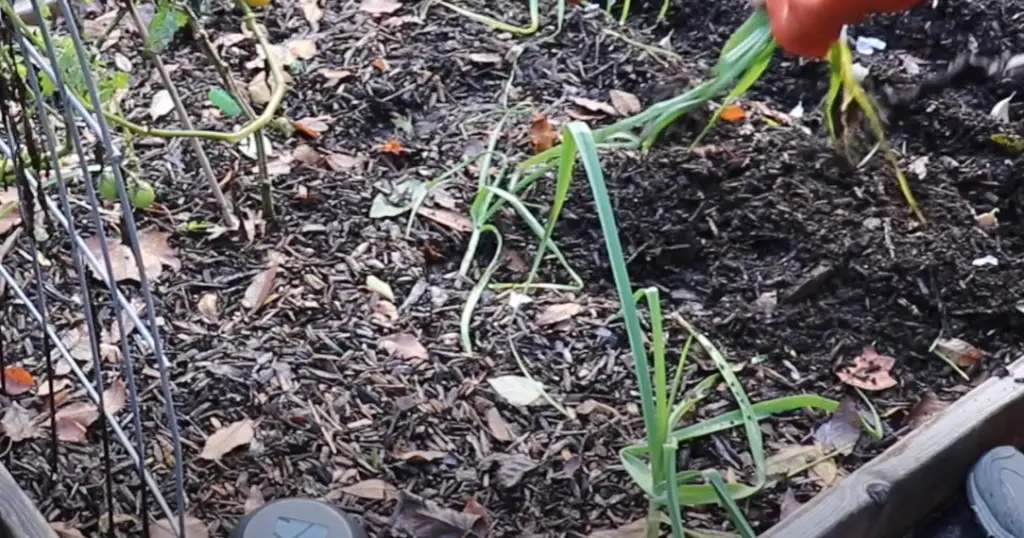
FAQs
What is the best garlic to grow in Zone 6?
Garlic is a hardy crop that can grow in most climates, and Zone 6 is no exception. The best garlic to grow in Zone 6 typically depends on the particular cultivar or variety chosen. Some of the most popular varieties for Zone 6 include Music, Chesnok Red, and German Porcelain Garlic. Each of these varieties has its own unique characteristics, such as size and flavor profile. Planting different varieties can help to ensure a good harvest over multiple seasons.
What month is the best time to plant garlic?
Garlic can be planted in most months of the year, but the best time for planting garlic is typically from late September to early December. This allows the cloves time to establish a good root system before winter and take advantage of cooler temperatures where available. Planting too early could lead to deterioration of the garlic due to hot summer temperatures.
What growing zone does garlic grow best in?
Garlic is a hardy plant that can be grown in most climate zones. The ideal growing zone for garlic is 5-10, but it will generally grow and produce well in any of the USDA zones 3-10. Garlic prefers cooler temperatures during the spring and fall months, so it should be planted in early spring or late fall to ensure optimal growth. It is important to note that garlic may require more careful attention when grown in warmer climates, as it can quickly become exposed to heat and dry out. To ensure the best garlic harvest possible, it is recommended to plan ahead and choose a good site for planting your crop. Be sure to select an area with plenty of sunlight, good soil drainage and adequate air circulation. Additionally, be sure to rotate your crop each year to prevent disease and give each patch of soil time to replenish its nutrients. With a little bit of planning and attention, you can easily grow garlic in any climate zone.
What temperature is best for planting garlic?
Garlic can be planted in the early spring when soil temperatures reach 45 degrees Fahrenheit. When the soil is at this temperature level, garlic will have an easier time taking root and germinating. However, it’s important to note that if you plant your garlic too early before the first frost, they may not survive through those cold temperatures.
The ideal planting time for your garlic should be between October and early December. This gives the cloves plenty of time to establish roots in the soil before the ground freezes over. When selecting which variety of garlic to plant, you should consider when in the season it will be ready. Some varieties are better suited for spring harvests while others can take a bit more time to mature and may not be ready until summer or fall.
Useful Video: PLANTING HARDNECK GARLIC IN ZONE 6 | 2021 | What we grew this year & trying a new variety for 2022!
Final Thoughts
Planting garlic in zone 6 is interesting and rewarding! It allows you to create delicious dishes with homegrown garlic that are sure to tantalize your taste buds. As a general rule of thumb, October or November are the best months to get started with planting garlic. However, the timing may vary depending on factors like soil moisture and temperature. If possible, consult a local agricultural specialist for recommendations and advice. Remember, soil drainage must be good for optimal growth; too much water can cause issues such as rot during the cold winter season. Also, provide plenty of sunshine (at least six hours per day) and occasional feeding for vigorous growth when planting garlic in zone 6! Ultimately, following these simple instructions combined with timely planting will ensure harvesting fragrant and flavorful heads of garlic come June time!
References:
- https://planthardiness.ars.usda.gov/
- https://www.bobvila.com/articles/hardiness-zones/
- https://www.masterclass.com/articles/guide-to-planting-zones
- https://www.thespruce.com/what-are-hardiness-zones-5322799
- https://todayshomeowner.com/hvac/guides/hardiness-and-heat-tolerance-understanding-your-zone/
- https://morningchores.com/zone-six-gardening/
- https://howtoculinaryherbgarden.com/types-of-garlic/
- https://plantophiles.com/gardening/plant-garlic-in-us-hardiness-zone-6/
- https://www.floridayards.org/when-to-plant-garlic-in-zone-6/
- https://www.thespruce.com/harvesting-garlic-1402402
- https://www.gardenguides.com/how_7908179_plant-garlic-zone-6.html






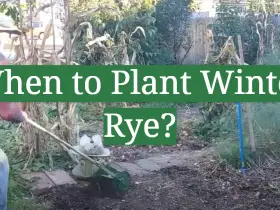

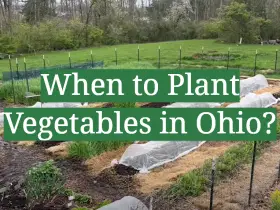

Leave a Reply
View Comments